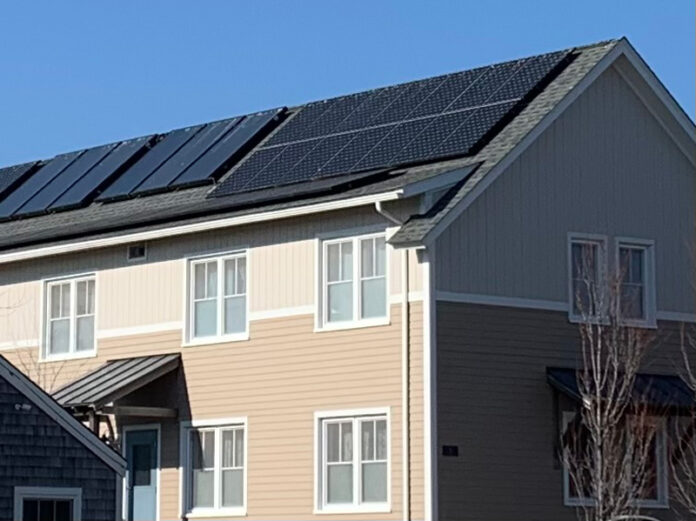Feng shui, Lagom, and Hygge: Tweaking your home’s energy for better welbeing – Property Reporter
Energy Disrupter

To adapt to the current climate, many businesses have chosen to adopt a more permanent home working policy. And as a result, we’re all spending more time in our homes than ever before.
Creating healthy home and work spaces are vital. Not only to aid productivity but to set boundaries between home and work environments to better promote wellbeing.
While an organised, well-lit space is key for your workspace, your relaxing space should allow you to switch off and help resist the temptation of working out of hours.
Sofa and carpet specialist, ScS.co.uk, has teamed up with two interior design experts to explain the concepts of Feng shui, Lagom, and Hygge, how they can help your mental wellbeing, and how you can achieve these looks in your home.
Feng Shui
Digging into the history of the concept, Nikki Bishop, a Feng shui consultant, explains that it originated from Asian culture where it translated as ‘a safe place to live’, but has been refined and adapted in recent years to relate to the energy of our natural environment.
Nikki says: “Making a house a home is a familiar phrase, and anyone who has been house hunting knows that some attract us more than others. Feng shui is an understanding of energy. When this life force energy is present and vibrant, people, animals, and plant life are also vibrant and prosper, but when it is adversely affected then plants can wilt and die, animals suffer, as do humans. We need this energy to be vibrant to support us, in the same way as we have this energy inside of us, a house also contains this energy.
“In our modern urban environment, properties are being built in locations where we would never have built many years ago. As a result, there is an increasing number of properties that could benefit from an improved flow of energy.”
There are basic principles that anyone can apply to their home. When it comes to the entrance of the home, as well as the living room, Nikki advises:
1: Keep the path to the front door clear of any rubbish, weeds, or clutter.
2: Avoid clutter and homeware pieces that are too large for the size of the space it sits in to allow the energy to flow freely.
3: Position sofas so you have a solid wall behind you and where you have a clear view of the door into the room. Having a clear sight of the entrance to the room helps those with anxiety to relax in their own home.
4: Don’t feel that your furniture is fixed, move it around to freshen up the atmosphere of the room.
5: Stick to a lighter palette of colour as they’re more versatile, but use stronger colours to accent certain rooms or areas through soft furnishings and artwork.
Hygge
Pronounced “Hoo-gah”, the Danish word translates into interiors that create intimacy, encourage conversation and form a defined area around a group, such as the glow of candlelight. However, it is slightly different from Lagom, which means ‘just right’, not too much, not too little.
Anna Sjostrom Walton, a biophilic design expert, and blogger explains that “non-Scandinavians often assume Hygge and Lagom mean the same thing, but actually, the Swedish word “Mysigt”, meaning cosy, is closer to the Danish Hygge as we know it – it just hasn’t gone viral.”
To tell the difference, Hygge homes create a feeling of togetherness. To achieve this feeling, Anna recommends:
1: Create an intimate space – include chunky-knit blankets on your sofa for added cosiness.
2: Light candles in the middle of tables you’re gathered around to create that sense of togetherness.
3: Place a basket of guest slippers by the front door to make guests feel welcome as soon as they walk through your front door.
4: Bring nature indoors by displaying plants and using natural fibres and materials.
5: Remember to keep your home functional, but decorate it with items that are meaningful to you.
6: Stick to a neutral colour palette.
Lagom
Lagom is slightly different again. It’s all about creating effortless balance by stripping back accessories and over the top feature walls. Anna says: “You can attract attention with a statement piece, but balance it with ease elsewhere (hence the prevalence of white, black and grey colour use in Scandinavian interiors).”
Anna explains that Lagom means “just right” and has given her tips on how to achieve this look:
1: Keep it simple, avoid too many busy accessories and don’t overdo it with loud feature walls.
2: Allow your home to breathe by de-cluttering. Stylish open shelving can display your most treasured items, whilst lifting the attention from clutter below.
3: Make sure practicality comes first, this could be anything from making sure the coffee table isn’t too far out of reach, or the cupboards are easily accessible.
4: Bring the outside in with flourishing plant life and flowers.
5: Embrace natural lighting, use light curtains and don’t block the windowsills.
Dale Gillespie, Head of Acquisition at ScS, comments: “After a while, our home interiors can feel tired and uninspiring, however keeping up with all the latest interior trends and fashions can be time-consuming and expensive. Meeting in the middle by playing around with the furniture and home accessories is a smart go-to before considering any huge DIY changes. Hopefully, our tips on three of the biggest interior design trends can help people to spruce up their home and allow them to achieve a little more zen.”
Original Source: https://www.propertyreporter.co.uk/household/feng-shui-lagom-and-hygge-tweaking-your-homes-energy-for-better-welbeing.html















